Taking a Stab at Stickbar at Gozu
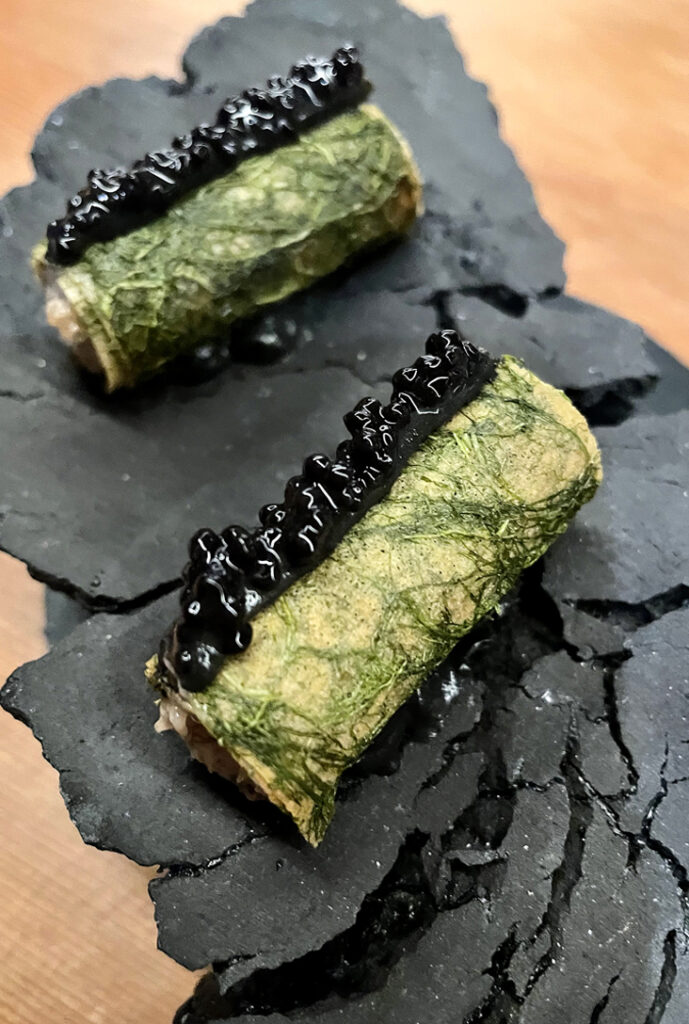
Nowadays, there are many restaurants where you can enjoy a Wagyu steak. But at Gozu in San Francisco, you can sink your teeth into smoky skewers that spotlight both familiar and unusual specific cuts of the prized Japanese beef.
When Chef-Owner Marc Zimmerman opened his hearth-centered restaurant in 2019, it was thought to be the only restaurant in the United States to directly import from Japan full cuts of top-grade A5 Wagyu. That amounts to a whopping 750 pounds in one shot.
That gives him the ability to use nearly every part of the outrageously marbled beef, often in audacious ways, including burning the bones as charcoal and fermenting lean cuts to make shoyu.
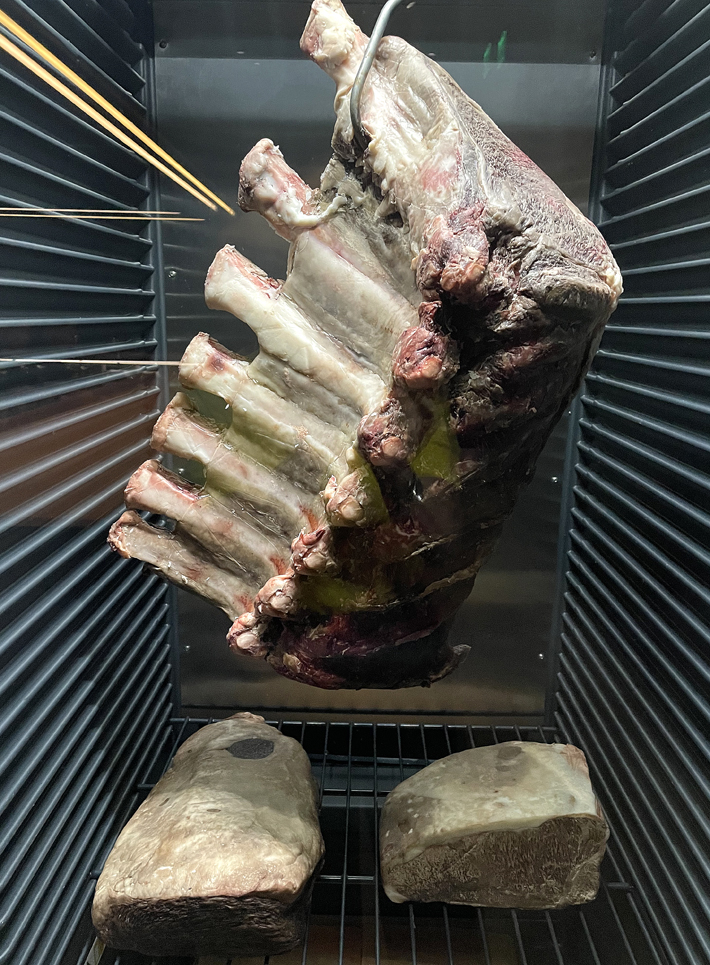
You can experience it for yourself with a $125 four-course menu or a $225 tasting menu. Or opt for the a la carte Stickbar menu that allows you to try individual skewers, priced from $14 to $55, depending on the cut.
Last week, I was invited in as a guest to try that skewer menu, which is printed with helpful info that ranks each cut’s tenderness. For instance, the chuck tender gets two stars, indicating it’s one of the least tender skewers on the menu, while the rib eye gets four stars, signaling it’s one of the most tender choices.
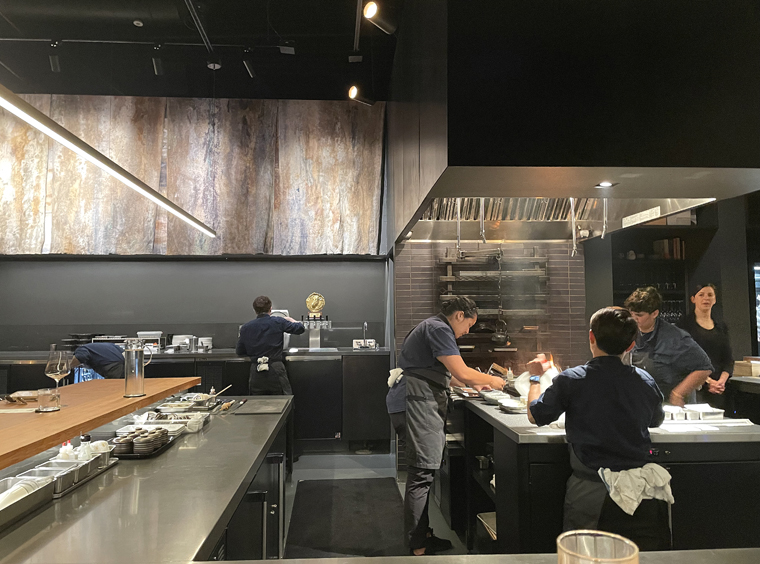
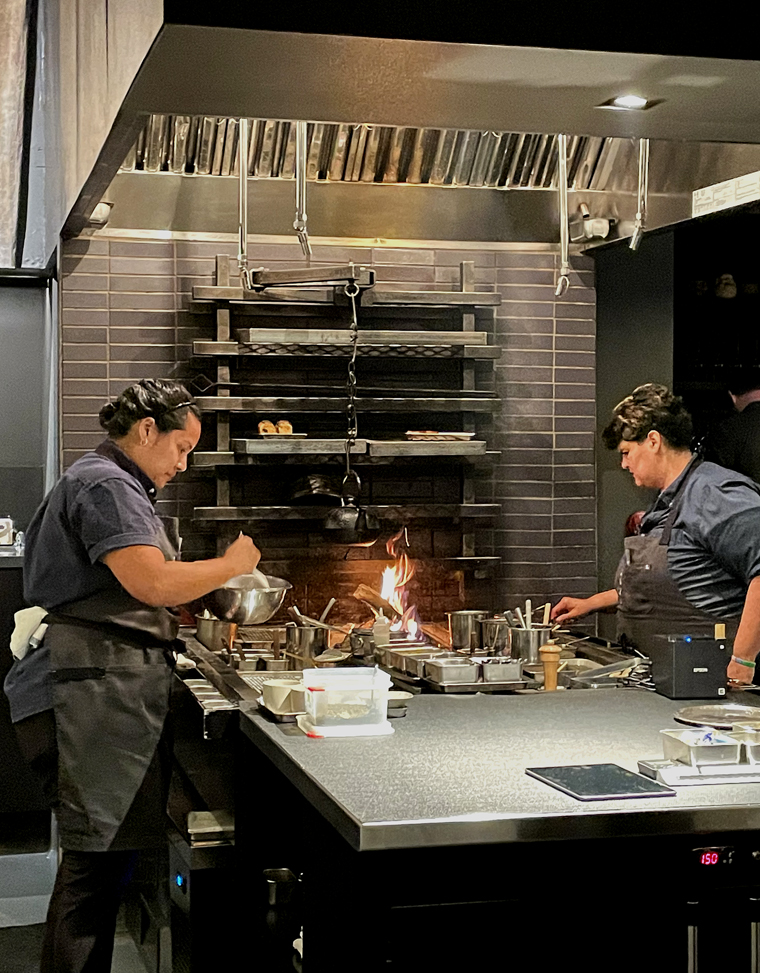
Get comfortable at the counter that rings the live-fire robata at the center of the dramatic black box theater-like dining room.
This is the place to indulge in whisky, as Gozu boasts more than 300 types, most of them rare Japanese ones. If you’re a light-weight like I am, go for a highball, a whisky cocktail that’s mixed with plenty of club soda and a little citrus to damp down the potency.
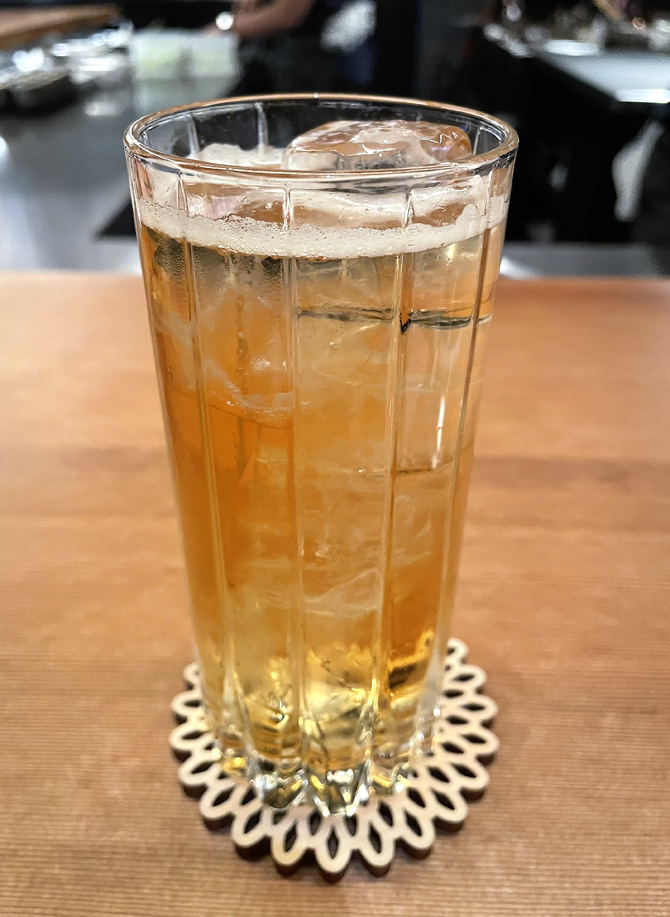
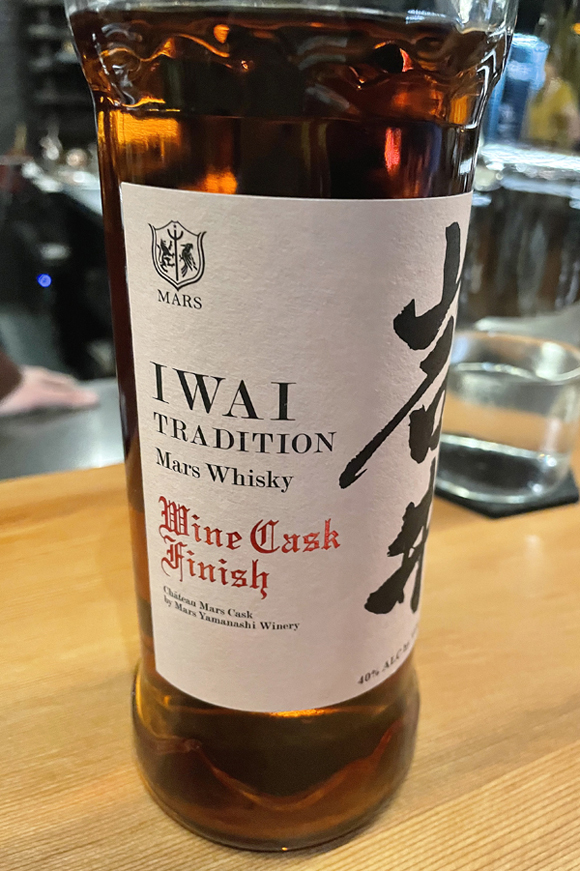
The Highball Wine Cask Finish ($19) features Mars Iwai Tradition Wine Cask Finish, a whisky that has spent 12 months aging in red wine casks. Only 2,495 bottles were made of this limited-edition whisky, which has notes of vanilla, toasted oats, and pomegranate.
I put myself in the hands of the chefs, who first presented a fanciful cannoli-like canape that they served at the previous night’s Michelin Guide awards ceremony in Oakland. It was creamy Wagyu tartare hidden inside a crackling crisp seaweed wrap with Wagyu “caviar” dotting the top. Yes, spherified tiny balls of fatty Wagyu juices that gushed. From that first bite, your mouth is flooded with intense beefiness.
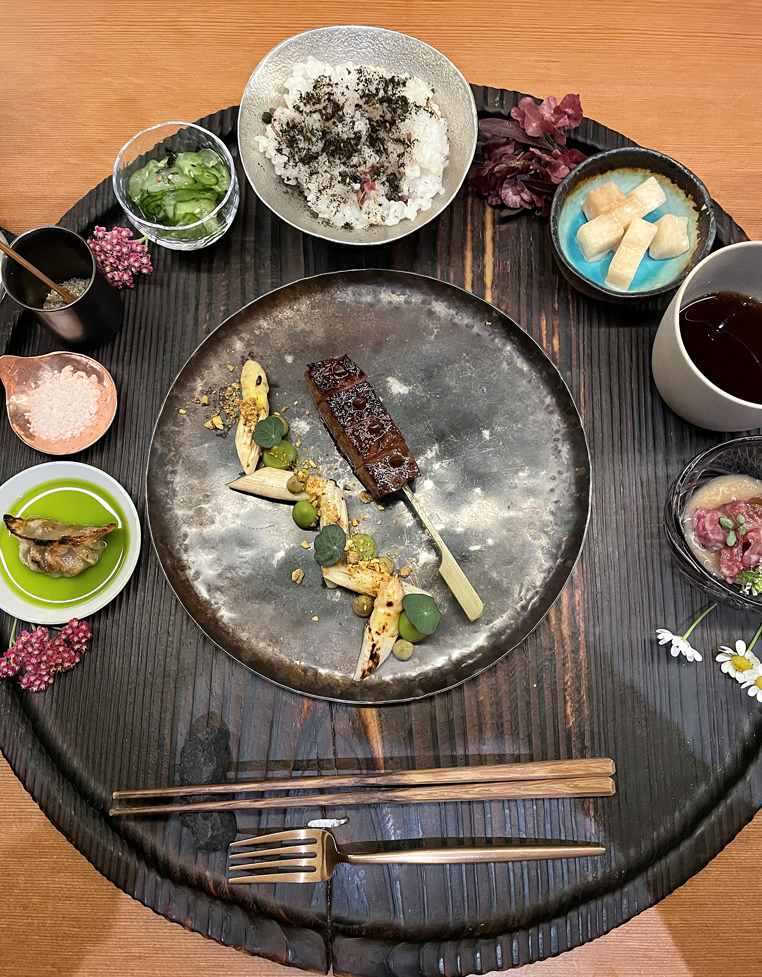
Next, a platter made for a king (or queen) was set before me. It’s normally the last savory course on the tasting menu. The impressive round tray, done up with fresh blooms here and there, held a series of small dishes and condiments arranged around a center plate that held a skewer of rare chuck eye, succulent with still some nice chew that burst with juices. Off to the side was grilled white asparagus finished with buttermilk, nasturtium leaves, and toasted pistachios.
Counterclockwise from the bottom right of the platter was seared slices of rare chuck in an earthy fermented truffle vinaigrette that heightened the savoriness of the beef that just melted on the palate. Next to it was a cup of Wagyu broth, as dark as soy sauce, with a concentrated purity beef.
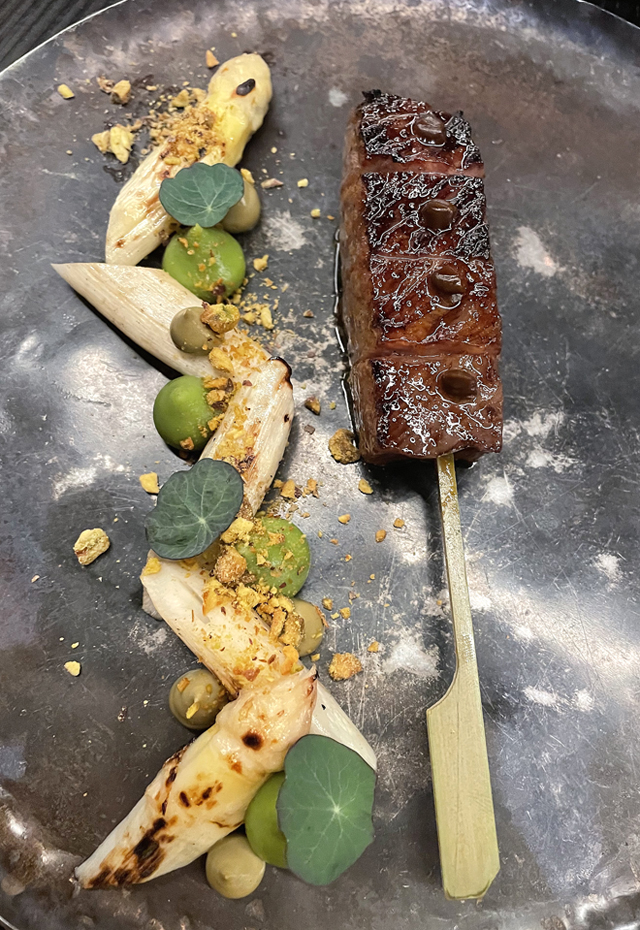
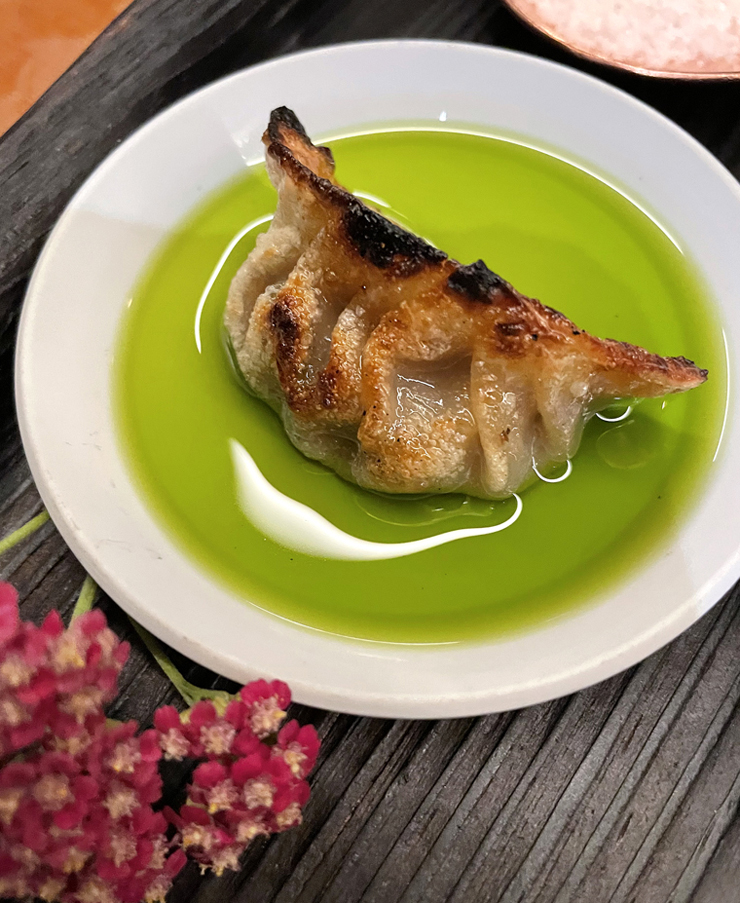
At the top of the platter as steamed Koshihikari rice, that was enriched with Wagyu neck confit, lending a gloss to each fluffy, distinct grain. Wagyu furikake was dusted over the top.
On either side of the bowl of rice were pickled daikon and pickled cucumbers, a welcome hit of acidity to reset the palate after all that indulgent fattiness.
Along with regular crystals of salt to add at your whim, there was also a small container of Wagyu salt with Shichimi that added a subtle touch of heat.
Lastly, there was a crispy-edged gyoza with a filling of — what else — juicy Wagyu.
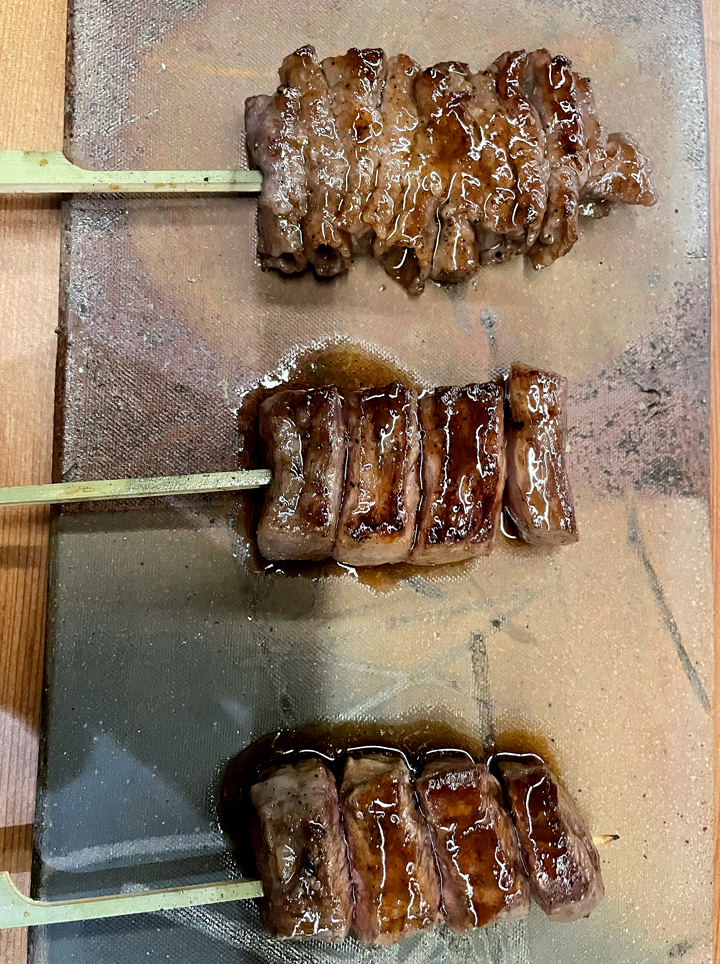
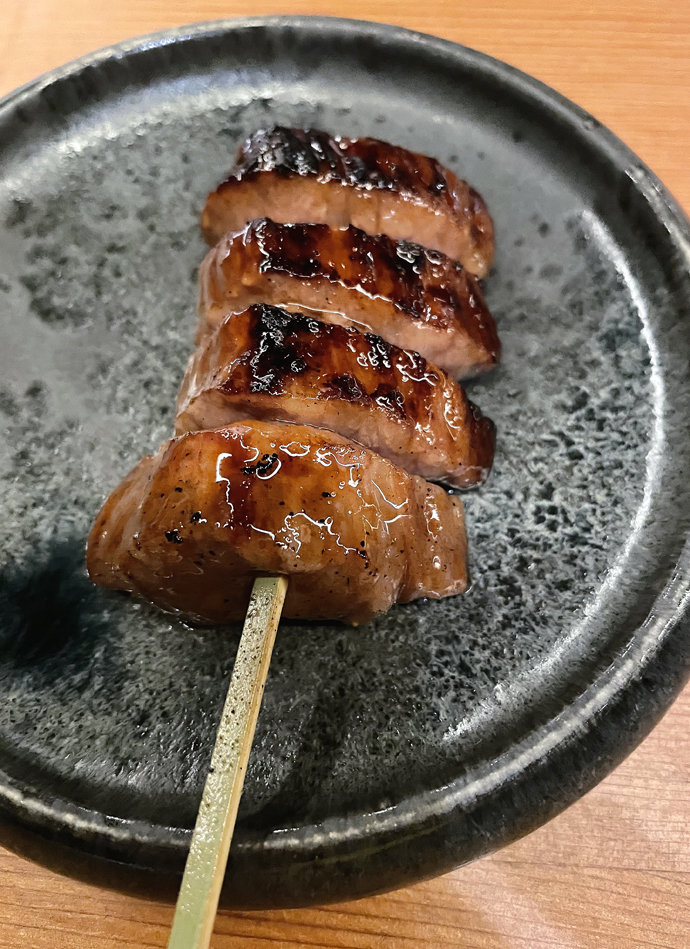
That was followed by a plate of three skewers that really let you discern the differences between cuts. First was the funny bone. Yes, cows have them, too. As the chef who delivered the dish explained, it’s normally a very chewy part, but at Gozu, they’ve learned to cut it thinly and shingle it on skewers so that it’s pleasantly toothsome. Because there’s not much of it on a cow, it’s an off-menu item that sometimes appears as part of the tasting menu. It was my favorite cut of the night because it has a little more texture than some of the other Wagyu cuts and just a tad more restraint in the fattiness to let its deep flavor shine even more.
Next to it was the flat iron, which was my husband’s top choice, for its snappy yet tender bite; and the tenderloin, the leanest and softest cut.
We also tried the tri-tip, which fell in between the funny bone and flat iron in texture.
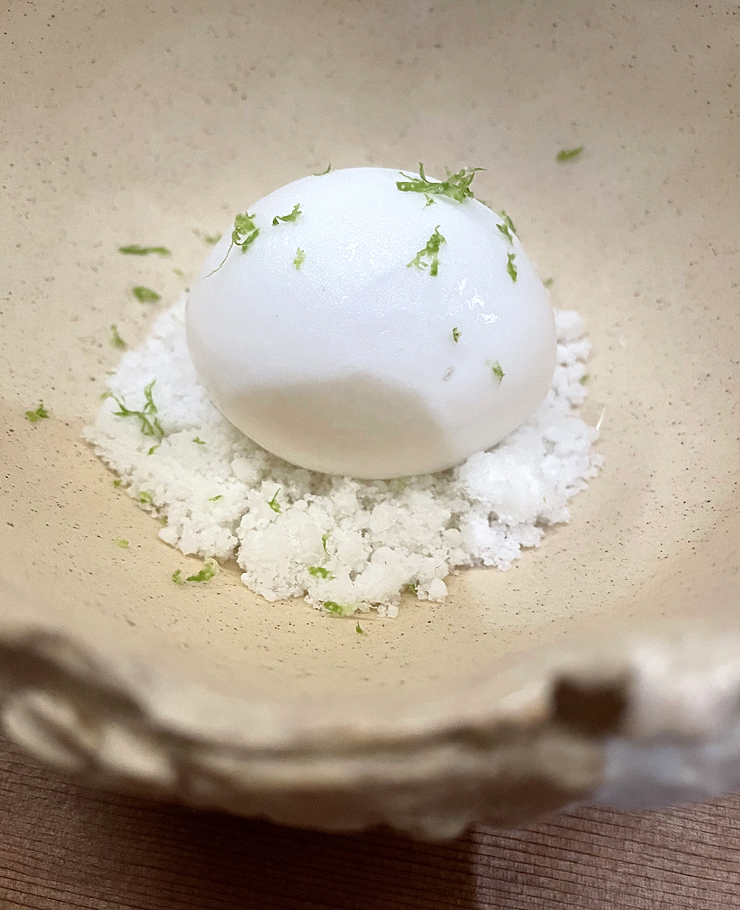
For dessert, the coconut sorbet ($15) resting atop icy lime granita proves the reset with its refreshing coolness and tartness.
There are also malted milk chocolate chunk tallow cookies ($7) that arrive warm after getting kissed briefly by the fire. That adds just the right amount of smokiness to these soft, crumbly cookies that have a nice touch of saltiness.
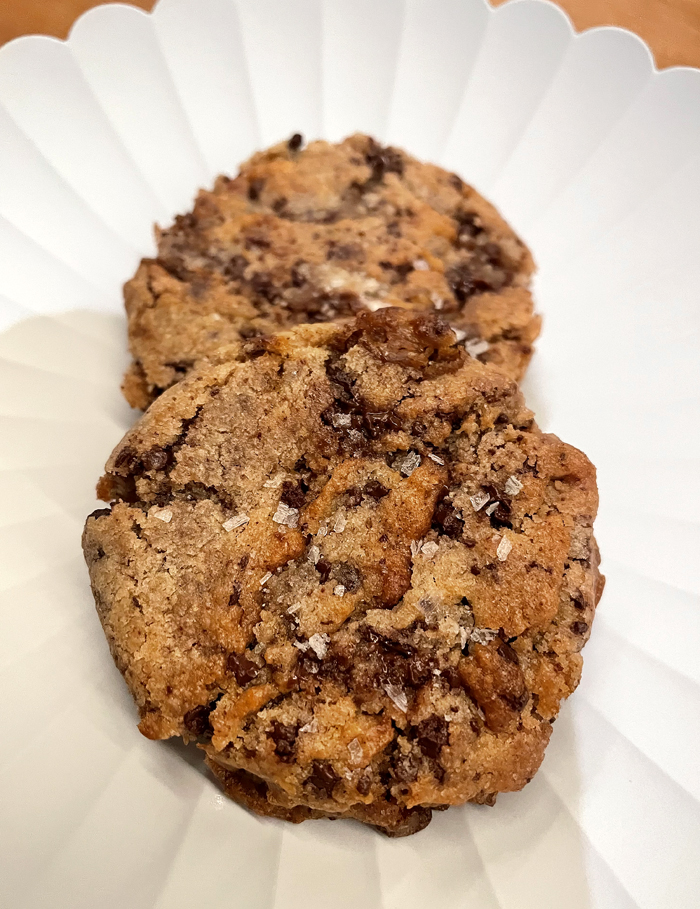
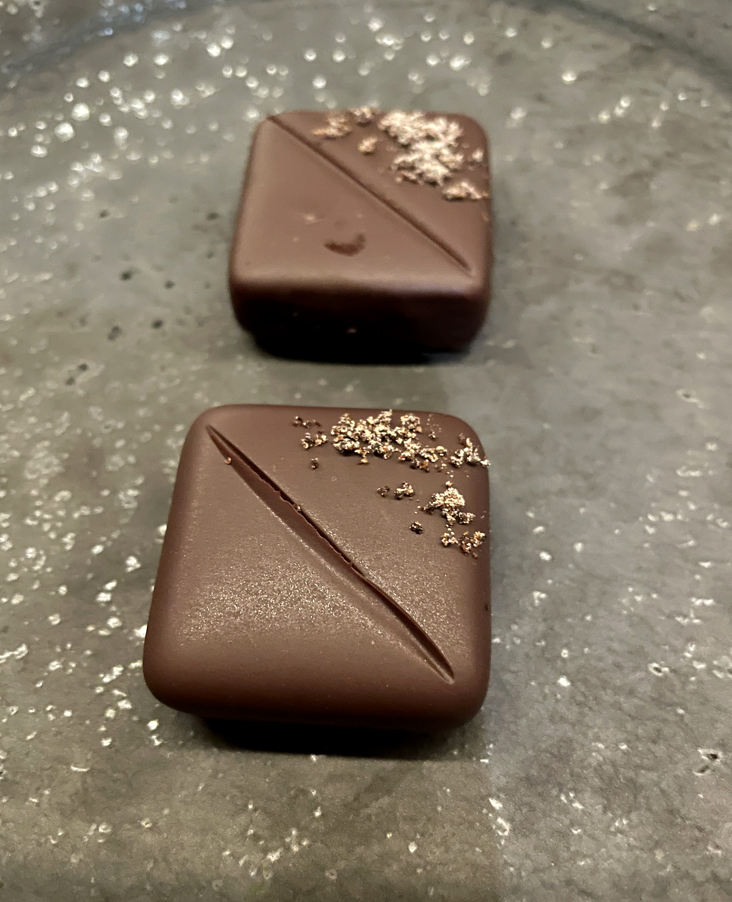
Lastly, there are chocolates made with a base of buckwheat shortbread plus runny butterscotch made with tallow for extra butteriness. Each chocolate gets a finishing sprinkle of garum, the house-made Wagyu soy sauce that’s been dried and turned into salt.
Get ready for even more the first week of September when Zimmerman opens his second restaurant just four blocks away. Yokai will open in the old Salt House restaurant location, a historic 1907 building with exposed brick walls, timber beams, and original 130-year-old wood floors.
There will be Wagyu, of course, but also a much broader menu with seafood and Iberico ham, along with many more Japanese spirits.
